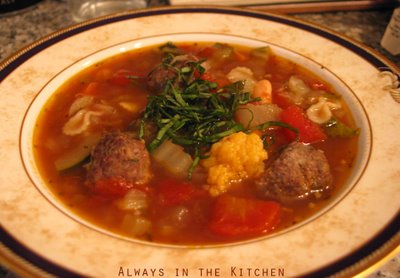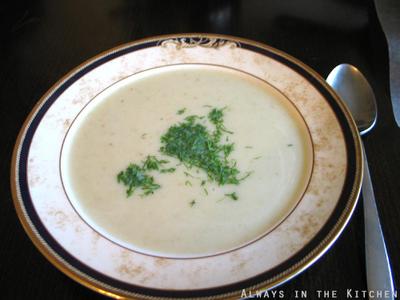
I kept it simple, to start. Rubbed the meat with a little kosher salt and olive oil, browned it well in a Dutch oven, deglazed with a cheap and cheerful Chilean carménère (Éstacion, $12, surprisingly drinkable), added a 400 ml tin of plain diced tomatoes with their juices and a half-cup of chicken stock. For seasoning, a sprig each of rosemary and thyme from the garden, 3 bay leaves, a few cloves of garlic (quartered lengthwise), and a dash of allspice. Once the dish was at a simmer, I put it in the oven, covered, at 300℉ for three hours. The last half-hour of waiting was pure agony, but the wait was worth it. Rich, meltingly tender, and with a deep, wonderful beefy flavour. Baked potato (since the oven was on anyway) and coleslaw rounded out the meal.I made extra, not that we'd have had the room for larger servings. No, the extra was for conversion purposes. I figure that any time I am waiting three hours for something to come out of the oven, I'm making it count. So, I cooked double the amount that we needed, and stored the leftovers in the braising liquid in the fridge.
The added bonus of advance preparation and chilling is that all of the lovely suet comes up to the surface, and an be quite easily lifted off (to feed the birds, or save for some other purpose), leaving a lean gel of braising liquid surrounding the still-on-the-bone meat.
So, what to do with the leftovers? Sandwiches, of course! I warmed up the meat and shredded it with a couple of forks (pulled pork style), and put it on toasted buns with a few pieces of the tomatoes from the braising liquid, topped the whole thing with a layer of edam cheese, and served with a spinach salad for super-fast dinner.

Since there was still a little shredded meat leftover that I couldn't cram onto the buns, and the rest of the braising liquid, I used the liquid as a base for a soup, adding a little extra broth, some carrot coins, corn, lima beans(!), and barley. At the end, the shredded meat went back into the pot to warm up. Embarassingly easy, and very delicious with a big hunk of bread to mop up the last bits.
 Bring on spring. I'm feeling fortified.
Bring on spring. I'm feeling fortified.





















